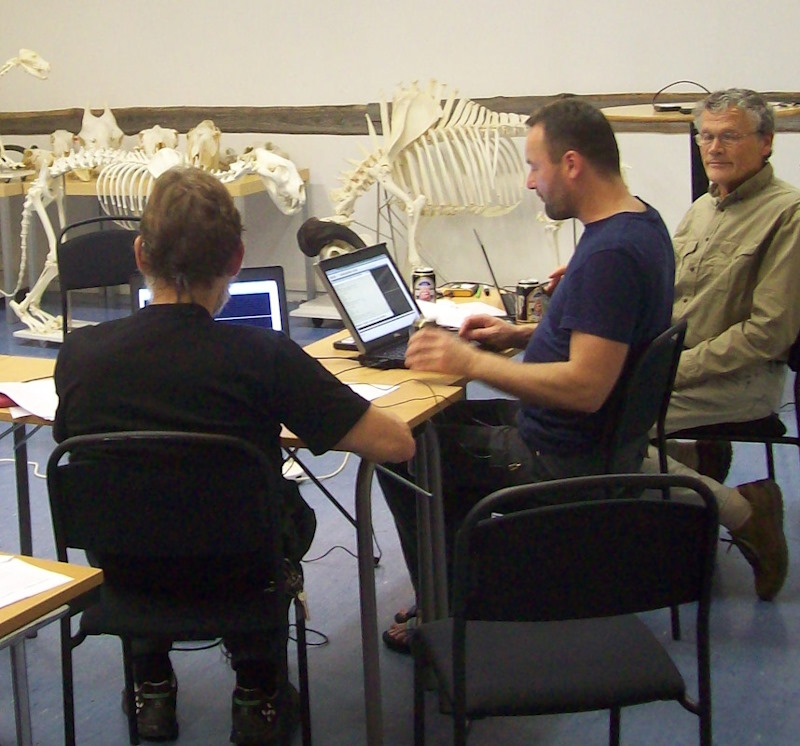
Data Analysis
Once your PODs have been retrieved, you’re ready to download the data and analyse it. The FPOD app converts the various .CHE files on the SD card into .FP1 files on the PC.
The FP1 file holds all the clicks recorded by the POD as well as the angle of the POD to vertical, the temperature for each minute, battery levels etc.
The FPOD app then allows you to view the raw data from F-PODs and/or C-PODs. To find cetaceans you run the automatic click train detection classifier, KERNO-F, to extract click trains that are placed in an FP3 file.
C-POD data must be processed using the older CPOD.exe software, that makes a CP3 . Then it’s best to view the C-POD data in the FPOD app.
The classification process typically takes 1 minute per day of data and provides a more accurate classification than can be achieved by classifiers that work on individual clicks.
In the SAMBAH project, 400 years of data from the Baltic Sea were analysed in 5 days of computer time to give a false positive rate of less than 1 false positive second per year by using the KERNO classifier and an encounter classifier Hel1 developed using a large data set from Poland. This very low error rate was achieved at high sensitivity and enabled the data to be used without further editing.
The FPOD app contains many display tools and filters that are helpful in understanding the soundscape and cetacean click trains.
To validate acoustic detections requires a knowledge of noise regimes as well as cetacean clicks and trains.
Finally, the apps have flexible export tools to pass the data in various formats to spreadsheets, databases and statistics packages.
Familiarisation time
It takes most users three or four days to become familiar with the software, setting-up and handling of PODs, with further learning time for data analysis.
What operational statistic should we use?
PODs don’t count animals, they measure the time for which animals are detectable. If animals moved rapidly around a large area, loggers would record more encounters than if they moved slowly, so encounter rates are not measures of density, but time present (TP) – the sum of train durations is, and will remain, more or less constant at likely rates of movement.
Counting click trains, as a form of cue counting, introduces a behavioural element (rate of head movement) that is unwanted if the aim is to measure density of animals.
The percentage of detection positive minutes, DPM, has proved to be a stable and well-behaved statistic that is now widely used. The time period of one minute can be raised with some benefit, provided it does not often exceed 30% and is always below 60%.
So for density or habitat use, the choice is between DPM and TP. At present we would recommend TP for porpoises and narrow-band high frequency (NBHF) species and DPM for the rest.
Behavioural metrics are not yet well defined. Click rates above 100/s have often been treated as representing feeding but it is now clear that social calls in both porpoises and dolphins are often faster and will be included with feeding.
Support
We learn a lot from data collected by F-POD users around the world and their data helps us improve the accuracy and sensitivity of the F-POD PC app train filter and species identification.
Any app improvements we make will always be retrospectively applicable to all data sets and new versions of the F-POD app will be available free of charge, so that you can re-analyse your data.
If you send us a copy of your F-POD data, we will, in return, provide brief feedback on the quality of your datasets free of charge. Any data you send us will be kept in complete confidence.
Please send data in the form of FP1 files to us using our Wetransfer account.
… this functions well and gives us a listing of files sent and which we have downloaded.
Please do not send .CHE files unless requested.